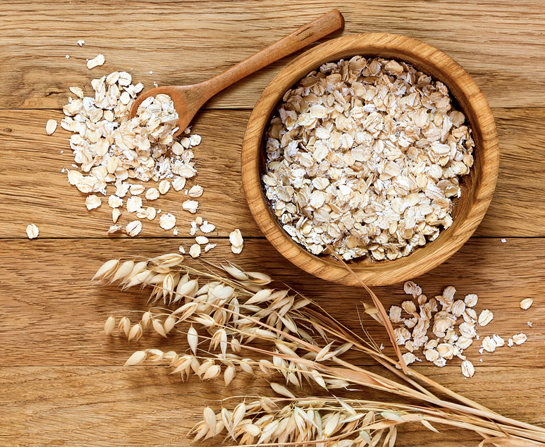The Awesome Power of Whole Grains
May 2, 2022 Return

Whole grain refers to the entire grain that contains the bran, endosperm and germ. They are rich in nutrients and should make up at least 50% of your total grain intake.
- Sources of dietary fibre, B vitamins, iron, zinc and other minerals, some proteins, and phytonutrients
- Sources of carbohydrates, some proteins, vitamins and minerals, and phytonutrients
- Sources of B vitamins, vitamin E, unsaturated fatty acids and phytonutrients
Some common types of whole grains include brown rice, whole wheat, oats or oatmeal, corn, rye, buckwheat and dehulled barley.
What is so good about whole grains?
Apart from being important sources of many nutrients that are important for health and maintenance of our bodies, whole grains are also rich in dietary fibre, which may help:
- Improve blood cholesterol
- Reduce risk of heart disease, stroke, obesity, colon cancer and type 2 diabetes
- Improve blood sugar control in people with diabetes
- Promote good gut health.
Dietary fibre can be divided into two types: soluble and insoluble.
- Soluble fibre is found in whole grains (especially oats and barley), beans, lentils, fruits and vegetables. It attracts water and forms a gel-like mush in the digestive system, which slows stomach emptying and makes you feel full longer.
- Insoluble fibre, in contrast, is found in wholegrain breads and cereals, nuts, seeds, lentils, beans, as well as seeds and the skins of fruits and vegetables. It provides bulk to the stools and speeds their passage through the stomach and intestines.
- While both soluble and insoluble fibre are equally important in reducing your risk of heart disease, soluble fibre appears to have extra benefit on your heart health – it lowers your total and “bad” LDL cholesterol, too. Hence, it is recommended that you take 7–13g of soluble fibre per day.
Oats are a good choice of soluble fibre
Oats are amongst the grains that have a high proportion of soluble fibre. They help reduce cholesterol, as part of a varied and balanced diet and healthy lifestyle, without affecting the good cholesterol your body needs. They also contain very little saturated fat and salt.
Oats are versatile; they can be made into delicious drinks and granola, eaten as cereals, added to bread and smoothies, and used for cakes and pastries.
So, what’s next?
Knowing the health benefits associated with whole grains, you will now want to know how to look for their products so that you can incorporate them into your daily diet.
- “Whole grain” is the keyword. Look for the phrase “whole grain” or whole grain logo on the food package.
- Don’t be confused by the food colour and dietary fibre content. Foods with high dietary fibre or brown colour aren’t necessarily whole grain products.
If you like this article, do subscribe here.
